2016 Student Participants

Phoebe Barnes, University of Maryland Baltimore County
The effects of widgeon grass and a red macroalgae on the behavior of juvenile blue crabs
Faculty Mentor: Dr. Maurice Crawford
Seagrasses serve as spawning and nursing habitat for juvenile blue crabs (Callinectes sapidus). In the Maryland Coastal Bays the most abundant species of seagrasses are Zostera marina and Ruppia maritima, Widgeon grass. In recent years the extent of seagrass coverage has been declining, while there have been increases in the amounts of macroalgae. To understand how these changes may impact juvenile blue crabs we used experimental aquaria to examine the effects of two different acclimation periods, substrate use (macroalgae, seagrass and sand), and crab behavior within each substrate. We found that blue crabs better acclimated to the experimental tanks after a 24 hour period compared to 30 minutes. Our results also showed a preference by blue crabs for macroalgae over seagrass and sand substrates. In addition, within those substrates crabs displayed twenty-three percent more foraging activity in the macroalgae than in the seagrass and sand substrates. These results suggest that as seagrasses decline and macroalgae increases, crabs may readily adapt to the changes in habitat availability.

Valin Booker, Hampton University
Phosphorus accumulation in marine sediments of dead-end canal (Jolly Roger area) Maryland Coastal Bays
Faculty Mentor: Dr. Nianhong Chen
Sediment is very important in biogeochemical cycling of elements including biologically important ones such as nitrogen, phosphorus and silica. Understanding of P speciation is essential to understand P. cycling and assess its bioavailability in the coastal environment. Phytoplankton have been shown to have a complex taxonomy that makes them difficult to identify within the water column, and one solution is to use the diagnostic pigments as biomarkers of different group of phytoplankton. The main objective of this study is to determine the different pools of phosphorus in sediments, the availability of nutrients (e.g. P) in water column and its impact on the phytoplankton growth in water column of dead-end canal of the Jolly Roger Area. Water and sediment samples were collected at three sites representing a gradient of the dead-end canal. The different pools of phosphorus and pigment concentration in water were measured. Results show that, in contrast to the common view that dead end canal may serve as storage of phosphorus in sediment, dead-end canal is not efficient in converting phosphorus to refractory fraction. The low availability of reactive phosphorus for conversion to more refractory fraction in deeper end indicate a net flux of dissolved phosphorus from sediment to water column to support high primary productivity, in particularly, very high abundance of dinoflagellate which was only found in Site 3.
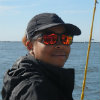
Anjali Boyd, Eckerd College
The size distribution of black sea bass at artificial and natural reefs in the Maryland and Virginia Coastal Bays
Faculty Mentor: Dr. Brad Stevens
Graduate Mentor: Cara Schweitzer
Black sea bass (BSB), Centropristis striata are listed as a “data poor stock”, due to our lack of knowledge about their life cycle, reproductive cycle and habitat preference. Yet, BSB are an essential part of a high-value retail market along the east coast of the U.S. The objective of this study is to understand the abundance and size distribution of BSB at artificial reefs, relative to that of natural reefs. Understanding the habitat characteristics that are vital to juvenile and adult BSB survival, will also help us understand how BSB diet differs relative to habitats and size. Angling and commercial fishing traps will be used to catch BSB at the six sampling sites. Total length of captured BSB was recorded and compared between artificial and natural reefs. Because BSB are as economically important as they are, it is vital that we understand the habitats that they thrive in relative to their age and size, which could help us better understand their life cycle. Understanding which habitats are vital for BSB could provide useful information for the development of potential marine protected areas (MPA), to ensure the survival of such an economically essential species.

Kyle Cornish, University of Virginia
Prevalence of the parasitic dinoflagellate Hematodinium sp. within amphipods
Faculty Mentor: Dr. Joe Pitula
Graduate Mentor: Kristen Lycett
The dinoflagellate parasite of the genus Hematodinium, has been found in crustacean species around the world and is the cause of seasonal mortality events. While primarily considered a decapods parasite, the presence of Hematodinium in alternate hosts such as amphipods has gone relatively without study due to the parasite’s presence in more commercially valuable species. In the blue crab, Callinectes sapidus, the infective agent is known as Hematodinium perezi, though this is just one of many crustacean species greatly impacted by the parasite. The objective of the study is to test if Hematodinium perezi is associated with amphipods in the Maryland and Virginia coastal bays. The objective was tested using endpoint PCR, cloning, and DNA sequencing on amphipod samples from April and June of 2016. This study has great potential to result in new knowledge by providing a greater understanding of the disease ecology of H. perezi in the coastal bays of Maryland and Virginia and also has the potential to reveal trends regarding prevalence and seasonal variation of the parasite. The results of the study conclude that Hematodinium perezi is present in amphipods with a prevalence of 13.89% (n=36) in April and 0% (n=5) in May. The genetic variation within cloned DNA suggests that the parasite infecting amphipods in the Maryland and Virginia coastal bays is different from that of the Chesapeake Bay. Future research will be conducted to determine whether the parasite is present through association or infection, and to continue investigation of genetic variation in the bays.

David Ferranti, Brown University
A comparison of the abundance and size of black sea bass in the Delaware and Maryland Coastal Bays
Faculty Mentor: Dr. Paulinus Chigbu
Graduate Mentor: Rebecca Peters
Information is scarce on the ecology of juvenile black sea bass (BSB), Centropristis striata, which use estuaries as nursery areas in the mid-Atlantic region. It is important to determine the spatial distribution and abundance of juvenile black sea bass and compare them between estuaries in the distribution range, in order to determine any potential differences between the nursery areas. Data from the Delaware Department of Natural Resources and Environmental Control (DNREC) were used to evaluate the distribution of juveniles in the Delaware Bay (DE Bay), which was then compared to similar data collected in the Maryland Coastal Bays (MCBs). Juveniles in the DE Bay were most abundant at two of the 33 sites which had structured habitats such as shell beds. Black sea bass average Catch-Per-Unit Effort (CPUE) was higher in the MCBs than DE Bay, although more smaller fish were found in the DE Bay during the spring. The average CPUE of BSB was similar among all months (p>0.05) in DE Bay in contrast to that in the MCBs that peaked in July. There was a significant correlation (rs=0.68; p=0.0002) between the annual CPUE of BSB in the two bays. Results from the study suggest that, on a per unit area basis, the MCBs are a more important nursery area for black sea bass than the DE Bay.
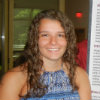
Sarah Jones, University of Maryland Eastern Shore
The effects of seagrass and macroalgae habitats on grass shrimp (Palaemonetes pugio) behavior
Faculty Mentor: Dr. Maurice Crawford
Grass shrimp (Palaemonetes pugio) rely heavily on seagrass habitat to provide them with shelter from predators and an area to feed. The extent of seagrass coverage is dwindling while the abundance of macroalgae habitats is on the rise in the Maryland Coastal Bays (MCBs). I examined how this change in habitat may influence shrimp behaviors using ten gallon aquaria. I measured the frequency of their behaviors under two acclimation periods (30 minutes vs 24 hours) and three different substrates (a red macroalgae, sand and seagrass). Results showed that shrimp were less mobile after 24 hours. I also found a preference for vegetated substrates (i.e. macroalgae and seagrass) over the sand substrate. Although, the sixteen shrimp that were examined did not show that they preferred the seagrass over the macroalgae. Therefore, the shrimp may adapt to the macroalgae if the extent of seagrass habitat continues to decrease.

Ahmed Mahmoud, College of New Jersey
Effects of concentrations of ammonium, nitrate, and urea on the growth of populations of Escherichia coli
Faculty Mentor: Dr. Eric May
Ammonium, nitrate and urea play a vital role in limiting or increasing algal growth. Our techniques to measure the concentrations of those nitrogen-based nutrients are limited to instantaneous testing of water or soil which provides us with readings that could have been altered by events such as rainfall. Microbial communities have a lagging response to their environments, so we address the knowledge gap that exists in which there is not enough data on the effect of the varying concentrations of those nutrients. We used various techniques to examine the effect of a range of concentrations on E. coli and determined that all three had deleterious effect on the microbial population growth.

Pablo Quinteros, Jr., Northern Arizona University
Analysis of mercury concentration in Callinectes sapidus (Atlantic blue crab) and Maryland Coastal Bay sediments
Faculty Mentor: Dr. Ali Ishaque
Graduate Mentor: Chelsea Richardson
Due to heavy metal applications, and natural processes mercury has entered the freshwater and marine environment which has increased human and animal exposure. Callinectes sapidus, also known as the Atlantic Blue Crab, are able to bioaccumulate Hg in tissues. The most common exposure to mercury is people ingesting mercury contaminated seafood. This poses a public health issue due to the toxic effects of mercury. The goal of this project is to analyze mercury concentrations in Atlantic Blue Crab tissue, and compare them with sediments samples to study bioaccumulation. Samples were collected in the Maryland Coastal Bays and freeze dried. Followed by analysis using mercury analyzer MA-2000. Overall muscle tissue had higher concentrations of mercury than hepatopancreas tissue and sediment. This might pose severe health issues for consumers. In conclusion, there was bioaccumulation from sediments since tissue concentrations were higher than in sediments.
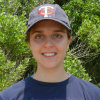
Anna Ramgren, Davidson College
Isolation, identification, and antimicrobial profile of Shewanella spp. in oyster and seawater samples from the Chesapeake Bay
Faculty Mentor: Dr. Ligia DaSilva
Shewanella bacteria are found in marine environments, are non-fermentative and typically produce hydrogen sulfide. Two species, Shewanella algae and Shewanella putrefaciens are known to cause a variety of infections, however infections are rare. In this study colonies were isolated on TSA +0.5% NaCl plates, streaked on triple sugar iron slants, and identified using the API 20E and Oxidase tests. Hemolysis testing was carried out on presumptive Shewanella isolates. Disk diffusion testing for antimicrobial resistance was performed with 24 presumptive Shewanella spp. isolates. A total of 40 isolates were identified as Shewanella putrefaciens group with 99% ID by API 20E. 96% of isolates tested for antimicrobial resistance were resistant to both Ampicillin and Penicillin, 88% of isolates were resistant to Cephalothin, 100% of isolates were susceptible to Kanamycin and 92% were susceptible to Colistin. The presence of Shewanella spp. in 4 out of 5 sites tested and the high antimicrobial resistance of these isolates suggest that Shewanella should be monitored in the Chesapeake Bay. In addition, further studies and antimicrobial resistance testing need to be executed to assess

Edwin Sanchez, Millersville University
A comparison of two cancrid crab species: Cancer borealis and Cancer irroratus
Faculty Mentor: Dr. Brad Stevens
Graduate Mentor: Noelle Olsen
Jonah, Cancer borealis, and Atlantic rock, Cancer irroratus, crabs were collected from Maryland and Delaware coastal waters to create a species-identification card for local fishermen. Recently, Jonah crabs became federally and state regulated while Atlantic rock crabs remain unmanaged. For males of both species, the morphometric attributes studied were the length of the right third pereiopod merus, right chela height, right cheliped weight, right chela width, right chela, length, total body weight, and carapace width. There were distinct markings and color patterns on the manus that proved useful for identification purposes. The variables that differed the most between the two species are the length of the third right pereiopod merus, the right chela height, and the difference in widths of the carapace. There was significant difference (P = 0.0002) in the length of the merus of the third pereiopod for a given carapace width between the two species. Additionally, the merus length showed a significantly (P = 0.038) higher ratio in C. irroratus than in C. borealis. Both chela height and width are positively correlated with carapace width for both species (C. borealis: R2 = 0.6647 R2 = 0.7673, respectively; C. irroratus: R2 = 0.8714 R2 = 0.8632, respectively). We found that chela height of C. borealis was greater than C. irroratus for the measured range (60-140mm). The chela width did not differ significantly between the two species (P > 0.05). The difference between the max carapace width (maximum width perpendicular to the medial axis) and the base carapace width (the crevasse just in front of the largest anterolateral spines) are significantly different (student’s t-test, P < 2.2e-16). The ratio of cheliped weight to total body weight did not differ with carapace width, nor did it differ significantly between the species (ANCOVA, P=0 .127). Chela length increased with carapace width, but there was no significant difference among chela length between the species for a given size (P=0 .528).
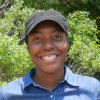
Marci-Ann Smith, University of Maryland Eastern Shore
Heavy Metals Analysis in Sediments from The Maryland Coastal Bays
Faculty Mentor: Dr. Ali Ishaque
Graduate Mentor: Chelsea Richardson
Heavy metals are considered to be toxic and could cause harm to organisms exposed to high concentrations. Some examples of heavy metals are lead, mercury, cadmium and arsenic. These metals can be fatal and can to lead unwanted mutations in organisms that live in the coastal bays with high amount of such metals. Therefore, this experiment was conducted to find out the ecological impact of heavy metal concentrations in the Maryland coastal Bays. Sediments samples were collected at different month and different locations of the Maryland Coastal Bays. Samples were freeze dried and digested with Nitric acid using microwave digestion, system followed by Inductively Coupled Plasma Mass Spectrometry (ICP- MS) analysis. Preliminary results showed that Zn concentrations were high in most of the sites and were highest in areas closer to human developments. High Zn can affect bacterial growth and that could interrupt the flow of energy needed to support the Maryland Coastal Bay ecosystem.
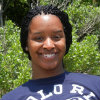
Alexis Smith, Alabama A&M University
Relationship between mysid abundance and fish predators in Maryland Coastal Bays
Faculty Mentor: Dr. Ejiro Mayor and Dr. Paulinus Chigbu
Mysids are epibenthic crustaceans, of the family Mysidae found in shallow and deep waters and in both marine and freshwater environments. Mysid species are important as major consumers of detritus, phytoplankton, and zooplankton and are a key component of the diets of higher invertebrates and vertebrates especially fishes. The goal of this study was to use data on mysid and fish (bay anchovy, summer flounder, and weakfish) abundances in addition to fish diet information to test the hypothesis that fish predation may be contributing significantly to the decline in mysid abundance in the summer. Fish and mysid abundance data for the periods 2012 – 2014 were obtained from MD DNR and UMES-CREST databases. Mysid abundance varied seasonally (P < 0.01) being most abundant in winter; spatially it was most abundant in the northern Assawoman Bay and St. Martin River, but lowest in Newport Bay. (P <0.01). In 2012 and 2014 summer flounder and Bay anchovy were most abundant from June toAugust (P < 0.02), perhaps contributed to the low abundances of mysid from August until October via predation. Estimated consumption biomass of mysids by Bay anchovy and Summer flounder in June and July were higher compared to mysid biomass in the environment. Results suggest that predation is an important factor controlling mysid abundance in the summer in Maryland Coastal Bays.
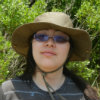
Linda Vu, Swathmore College
Prevalence of Vibrio and Salmonella in Oysters
Faculty Mentor: Dr. Salina Parveen
Graduate Mentor: Ar’Quette Grant
Foodborne illnesses annually impact millions of consumers and cause mild to severe symptoms, ranging from fever and diarrhea to necrosis and death. Raw oyster consumption is a particular risk to a consumer’s health because oysters are filter feeders and intake environmental pathogens, such as Vibrio and Salmonella; the bacteria may then populate within the oysters’ tissues. Previous studies found an over 50% prevalence for Vibrio parahaemolyticus and Vibrio vulnificus whereas Salmonella has had a prevalence of less than 10% in American oysters (Crassostrea virginica). The purpose of this study was to investigate the prevalence of Vibrio and Salmonella in C. virginica from the Chesapeake Bay. Samples of oysters and surface water were collected from five locations in the Chesapeake Bay: Chester River, Manokin River, Broad Creek, Oxford, and Tangier Sound from June to July, 2016. To determine Vibrio prevalence, water and oyster samples were diluted with buffered peptone water, supplemented with 0.1% NaCl, and spread on tryptic soy agar in what is known as the Colony Overlay Procedure for Peptidases (COPP) assay and on chromogenic media that distinguished different Vibrio spp. by color. To determine Salmonella prevalence, most probable number (MPN) was used by inoculating water samples in tryptic soy broth and oyster samples in buffered peptone water. For water, turbid samples were applied to rappaport-vassiliadis (RV) and tetrathionate (TT) broths. For oyster samples, modified semi-solid rappaport-vassiliadis (MSRV) agar and xylose-lysine-tergitol 4 (XLT4) agar were used to determine preliminary positives. Conventional PCR amplifying the invA gene was used for final Salmonella verification on positive RV, TT, MSRV and XLT4. It was found that Vibrio levels varied ranging from 12 to 320 cfu/mL in water samples and 3.1×103 to 1.3×105 cfu/g in oyster samples. Some sites decreased in Vibrio prevalence over time whereas other sites maintained increased prevalence. For Salmonella, out of the five oyster and water samples collected, only one water sample was found to be positive with Salmonella at a level of 1.3 MPN/ml. The low Salmonella prevalence rate found supported the findings of previous studies on Salmonella in C. virginica. These results suggest that oysters may be a potential source of Vibrio spp. but not Salmonella. Future research is needed to understand the seasonal distribution of these bacteria in oyster and water samples.


